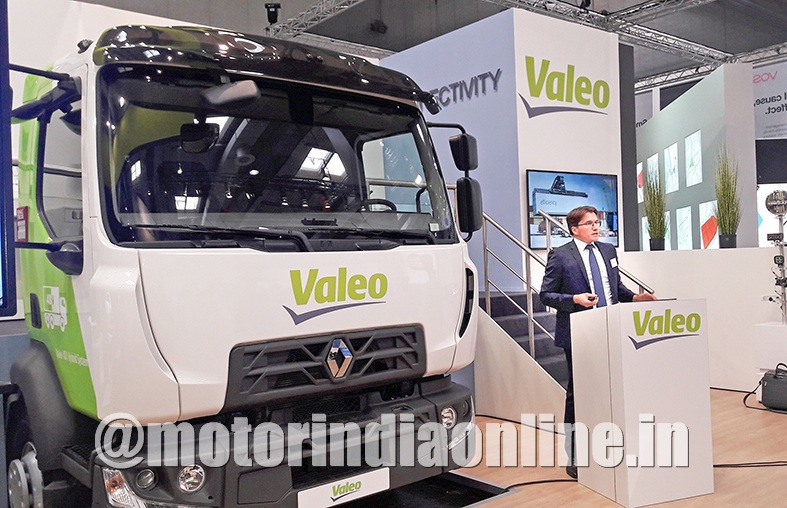Valeo has its special focus on innovations that are in sync with the revolutions disrupting the world of transportation. These are mainly in the areas of vehicle electrification, autonomous vehicles and digital mobility. These innovations are undoubtedly at the epicenter of the changing dynamics of the automobile industry.

Talking to MOTORINDIA at IAA Commercial Vehicles fair in Hanover, Mr. Thierry Simonin, Group Director, Commercial Vehicles, Valeo Group, disclosed: “A total of 65 billion packages have been delivered last year and it is even more impressive if we see it was a jump of almost 50 per cent in the last two years. It is good as it displays the transportation needs but also put forward various transportation constraints owing to global CO2 regulations for different cities. The challenge is to develop perfect solutions for the transportation paradox when we need to deliver more and more on the daily basis. Hence, Valeo decided to offer solutions on three important parameters – electrification, automated driving and connectivity. Playing on each is actually supporting the transportation industry.”
Valeo has spent 1.9 billion euros last year on research and development of its turnover in the three areas, and the result is phenomenal. He added: “For electrification we have low and high voltage solutions. Smart solution, with start/stop function, is easy to operate and helps in CO2 reduction. Some cities need full electrical systems and, with our partner Siemens we develop a high voltage solution. The same is with the autonomous solution, as one needs to achieve more with less.”
Knowing the innovations
Valeo’s technologies, namely, its innovative and affordable 48 V electrical systems and air-conditioning units for buses and coaches, make it possible to reduce CO2 emissions while also lowering vehicle operating costs. In autonomous driving, Valeo is adapting its cutting-edge technologies to the needs of all stakeholders in the world of transportation. One example on display at the IAA was a Solid-State LiDAR solution, a key enabler for automation of driving tasks in trucks. Also presented were a number of onboard safety systems, including Valeo Driver Monitoring, which can identify the driver, monitor his or her attentiveness and quickly ensure good control of the vehicle when it switches from automated to manual driving mode.
“Vehicle sharing is now quite common in road transportation. If there is a fleet of 100 trucks and say the key is circulating between the management and the driver. But what if you can access the vehicle with your smartphone, you don’t need a key. Imagine two drivers – one of which delivers a truck to the point B and then takes a rest, tomorrow another driver will take the truck. Our unique digital solution based on virtual smart-key system makes sharing even easier, with an unprecedented level of security,” beamed Mr. Simonin.
Valeo is also a world leader in sensors and for driver assistant systems. He said: “We sold over the last 15 years 700 million sensors. From cameras, scanner, laser scanner, etc., and we believe that in the next five years we will deliver 500 million. He said: “We are the only one to do mass production of laser scanner. Another type is the flash LiDAR, solid state, and for that we partnered with WABCO. Valeo will contribute its expertise in perception systems. Its radars and LiDAR and WABCO will contribute its knowledge of market needs and regulations in the areas of emergency braking system and advance driving assistant system. With regulations coming in like blind spot detection and platooning, we will be offering solutions with our partnership.”
Sooner or later, India will also adopt all the three innovations. On the company’s view on the same, Mr. Simonin said: “Step by step everything will be addressed as India will also want to focus on electrification, shared connectivity and autonomous vehicles. Our focus is to provide adequate knowhow in these three areas to support the requirements globally. It is important for Valeo to support the changes whenever and wherever required.”